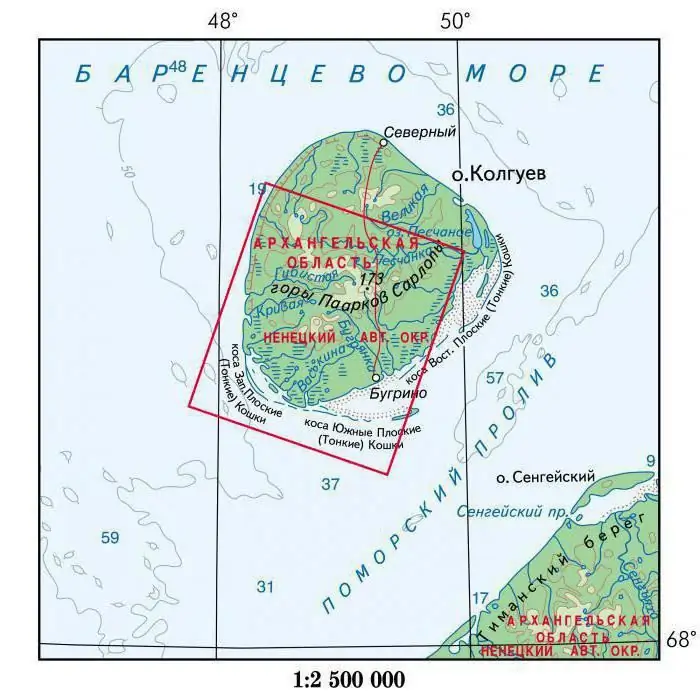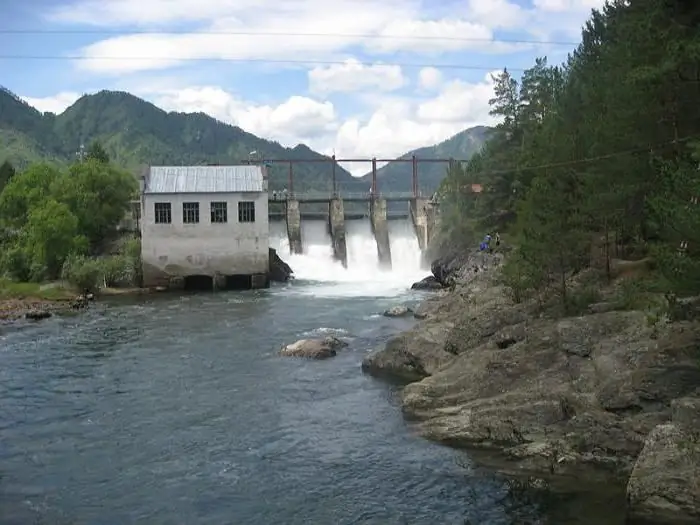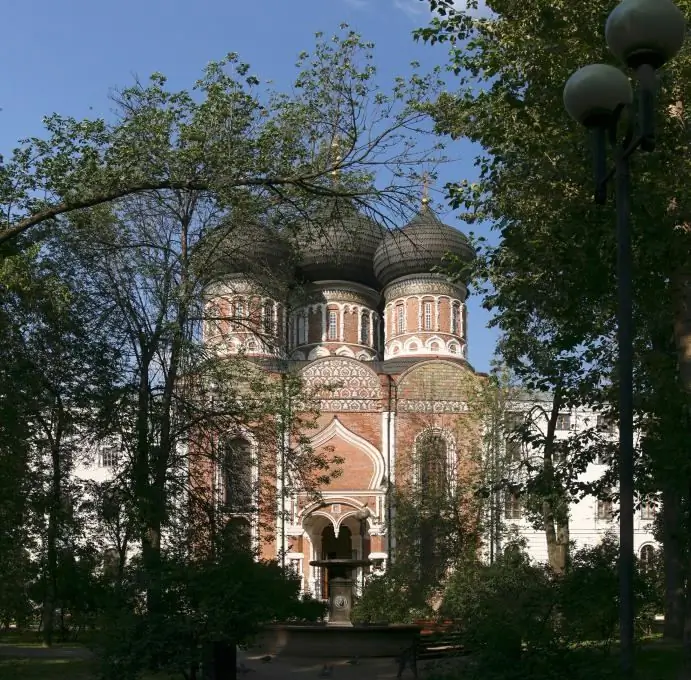- Author Harold Hamphrey [email protected].
- Public 2023-12-17 10:06.
- Last modified 2025-01-24 11:10.
Not far from the city of Genichesk, Kherson region (Ukraine), on a large deserted spit of Biryuchy Ostrov, the Azov-Sivash National Natural Park is located. The protected area in 1927 received the status of a state reserve. Many kilometers of sandy beach, shallow bays and bays, rich nature attract tourists to the region looking for a quiet, measured rest.
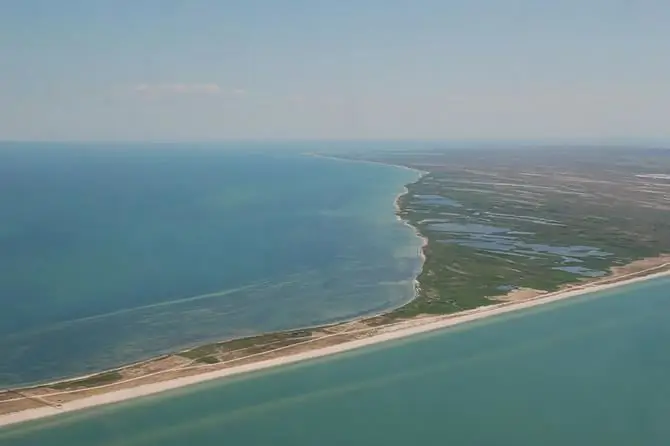
Geographic location
Biryuchiy Island, despite its name, is not actually an island. It is a 20 km long spit with a maximum width of 5 km in the northwestern waters of the Sea of Azov. This is a branch from the larger Fedotova Spit. Together with the Fedotov Spit, it forms a complex accumulative form of alluvial origin, about 45 km long, which significantly exceeds the parameters of all spits on the northern coast of the Sea of Azov.
From the south and southeast, the territory is washed by the Sea of Azov, and from the north by the waters of the Utlyutsky estuary. Biryuchy reallywas once an island 25 kilometers long and 3 to 5 kilometers wide. Later, the wind and surf washed up the sand, connecting the island with Fedotova Spit.
History
In Ukraine, there is a legend that Biryuchiy Island is of artificial origin. There are legends that it was washed on the orders of Peter I in order to block the way for the Turkish fleet. The vast shoals of the spit really represent a serious obstacle to navigation. However, there is no evidence for the theory. But scientists suggest that Biryuchy Island in the Sea of Azov was the habitat of the royal Scythians: this is indicated by excavations and its ancient name - Wolf Island.
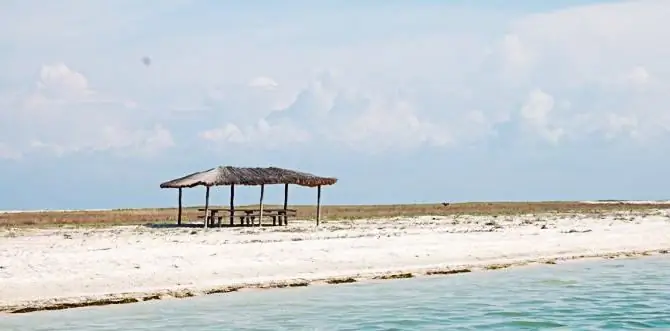
Physical characteristics
The soil of the spit is composed of shelly detritus with an admixture of sandy material, the thickness of the deposits reaches 10-12 m. They lie on silty and clayey silts of the Old Azov age. The soils of the Biryuchy Ostrov Spit are predominantly meadow and soddy, less often solonchak and alkaline marsh.
This spit was formed due to the successive connection of systems of coastal shell shafts with a relative excess of 0.8-1.0 m above the depressions, which are oriented in the western - south-western direction. A feature of this accumulative form is the absence of a triangular base, characteristic of other spits of the northern and eastern coast of Azov. The current area of the spit is about 7273 hectares.

Biryuchiy Island: recreation centers
Kilometers of sandy beaches, warm watersThe Sea of Azov, the healing steppe air, the diversity of the animal world are extremely attractive for the development of ecotourism. At the same time, the protected status of the territory does not allow active intervention in the ecosystem.
On Biryuchy Island there are only a few camp sites, you can also relax on your own - there are plenty of great places for camping. The following organized tourist sites operate on the spit:
- Golfstream Hotel;
- Biryuchiy mini-hotel;
- recreation center "Golden Coast".
Biryuchiy Island can be visited with organized excursions by sea from Genichesk and transport from Kirrilovka. You can also relax directly in the protected area in the village of Sadki (the so-called "Khrushchev's dachas"), where the park workers live.
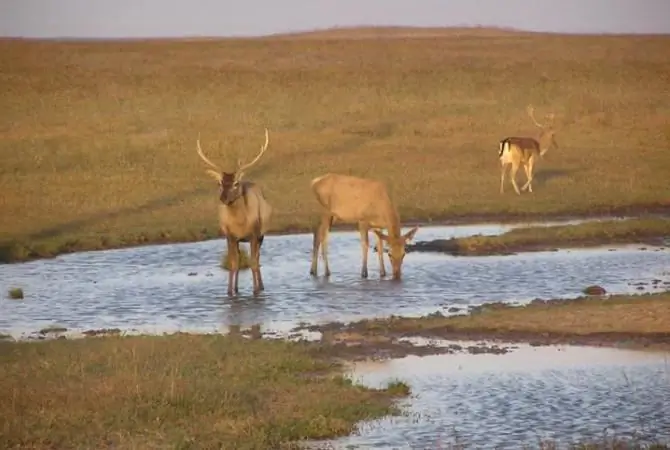
Azov-Sivash Park
The landscapes of the spit have been under protection since 1926, first as part of the Nadmorskie Kosy nature reserve, later - the Azov-Sivash nature reserve, then reorganized into a hunting reserve. Since 1993, the spit has been attached to the Azovo-Sivash NNP. The Biryuchany section of the park includes the Biryuchy Island spit (7273 ha) and a kilometer strip of the Utlyutsky Estuary and the Sea of Azov (5900 ha).
In the vegetation cover of the Biryuchy Ostrov spit, there are littoral, sandy-steppe, saline-meadow, saline, coastal-water, synanthropic groups, as well as artificial forest plantations. There are 188 plant associations here. At present, sandy steppes occupy 28,2% of the territory.
In 2009, 5 species of artiodactyls and 2 species of equids were recorded in the fauna of mammals of the Azov-Sivash NNP. Of these, only wild boars have left these places in recent years, other species feel quite comfortable. The most valuable game animals in the park are red deer, fallow deer and European mouflon. The current number of ungulates (including domestic ones) on the spit is about 3870 individuals.



